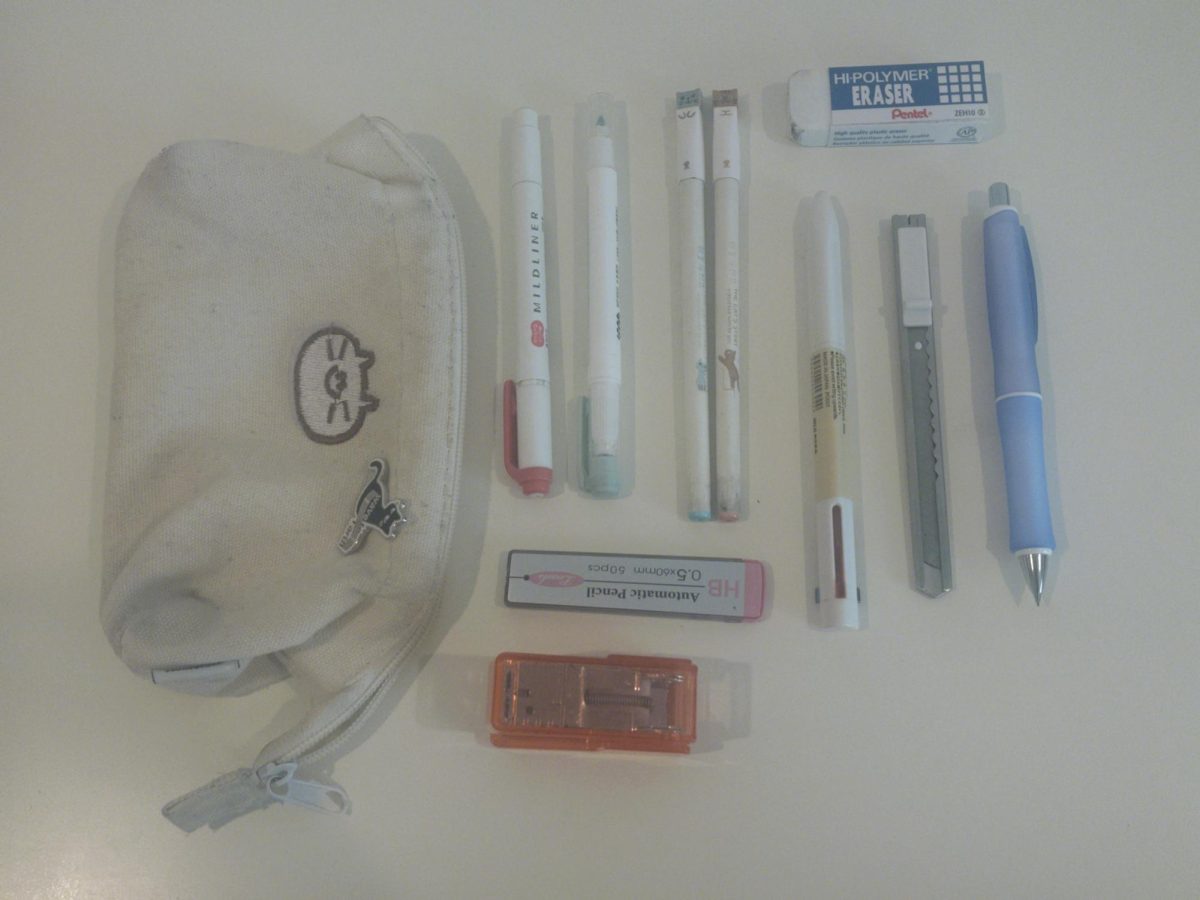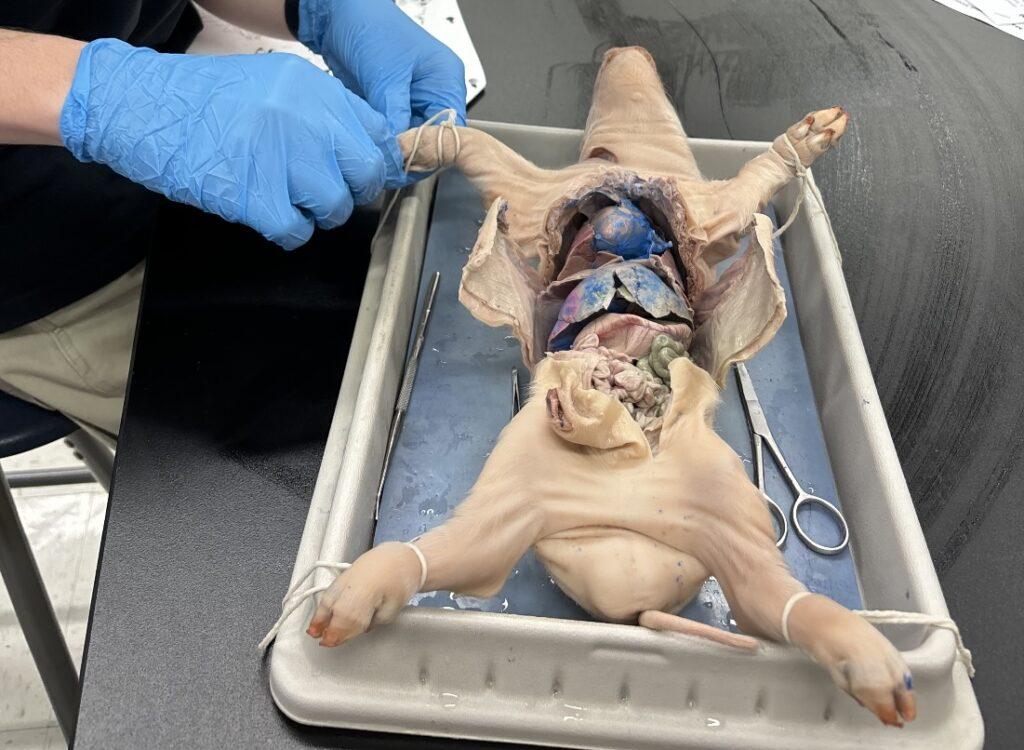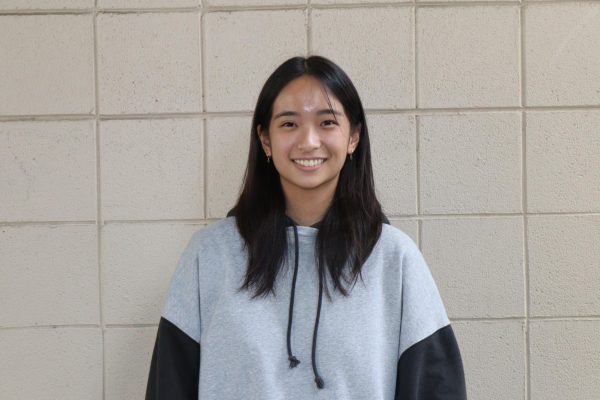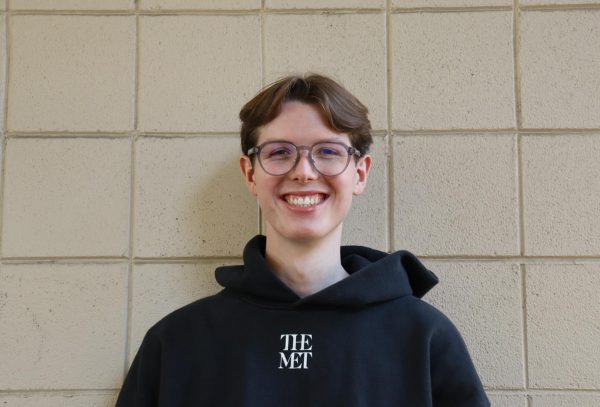In a recent Anatomy and Physiology class, senior Alyssa Liu carefully picked up a pair of forceps and observed the composition of a fetal pig before beginning to dissect it.
Through this lab, Liu learned more about the pig’s internal anatomy and specific functions associated with each organ, an essential part of the core curriculum of teacher Kris Orre’s class.
Liu said she enjoys the hands-on nature of the class. In every unit, Orre incorporates several interactive activities to help reinforce the students’ understanding of the core concepts he teaches.
“The class is pretty much what you make out of it,” Liu said.” While there is a minimum requirement for assignments, there’s technically no limit to how much time you can spend to learn more about the topics.”
Established in 2013, the elective is offered to only upperclassmen and is an alternative path to Advanced Placement science classes. Orre, who has been teaching the class since 2022, said he tries to find ways to continuously update the curriculum by incorporating outside research, as he considers the class to be a combination of memorization and application. Orre has one section of the class this year.
In college, Orre noted, the course would be separated into two different classes: anatomy, where students learn and memorize the structures of the human body, and physiology, which analyzes how the body functions.
“When I teach the muscular system, I teach them the basic structures and some physiology side by side so they learn enough of the anatomy to understand the physiology,” Orre said. “For example, anatomy would be learning about muscles, and physiology would be learning how the muscles contract and allow our body to function.”
Orre starts the year by going through the major systems of the body. As the course moves throughout systems of the body, Orre circles back to teach how the pillars of health influence bodily systems. The class starts with a unit of health where students learn about the pillars of health — sleep, exercise, nutrition, stress management and social health — and how they relate to the human body.
Compared to other classes, Orre finds himself constantly updating the curriculum with new findings outside of the traditional textbook.
“I use the textbook as a supplement,” he said. “The content I create is usually based on my own learning and research around the topics. I love to read nonfiction work, and when I read books I think are relevant and applicable, I’ll have [my students] read that selected chapter to have conversations and discussions.”
Some books he has incorporated into the curriculum include “Lifespan” by David Sinclair, “Breathe” by James Nestor and “Behave” by Robert Sapolsky. These books are mainly added into his labs and lectures, as Orre reads them in his free time and adds the information that applies to the curriculum. They allow him to demonstrate current scientific trends and help his class grow their understanding of anatomy and physiology.
The labs and activities in the class, like the dissection, build on the basics learned through the textbook and Orre’s more up-to-date findings, allowing students to apply and further develop new ideas and concepts.
Anatomy and Physiology is one of the few science classes at the school that still performs dissections. The course involves three major dissections: a sheep brain, sheep heart and pig fetus.
“I think that dissections are an important experience for students to really see what they’re learning in real life,” Orre said. “You can learn about the structures of the heart all you want, but you don’t really understand it until you’re holding the heart in your hand and you’re seeing the structures and how the bicuspid and tricuspid valves close when the heart contracts.”
Additionally, Orre also creates projects for students to apply the concepts and test their knowledge.
After learning about the pillars of health, students individually identified areas where they could improve on. The students then designed an experiment to develop a new set of habits to test the science they learned about habit formation. Some students experimented with strategies to get more exercise, enhance nutrition or optimize sleep, such as limiting phone usage.
“I try to help them connect with their learning to their lives and apply it,” Orre said. “When you really understand the science behind how something works, you’re more likely to connect with it and then apply it, so that’s always kind of a balance.”





























